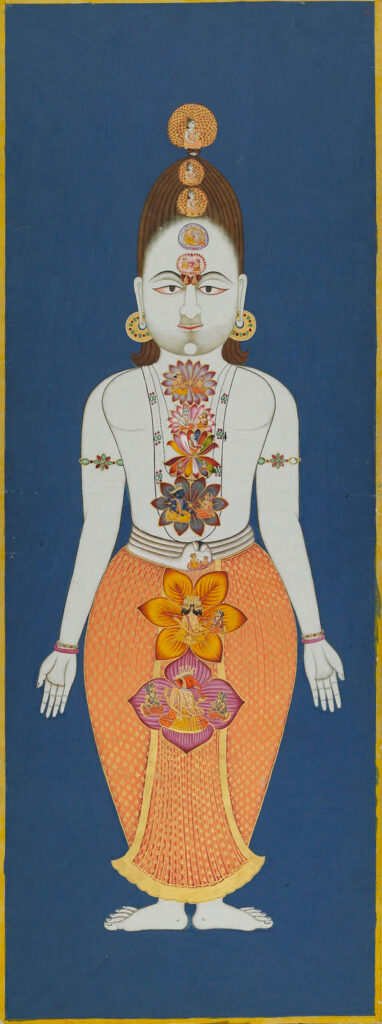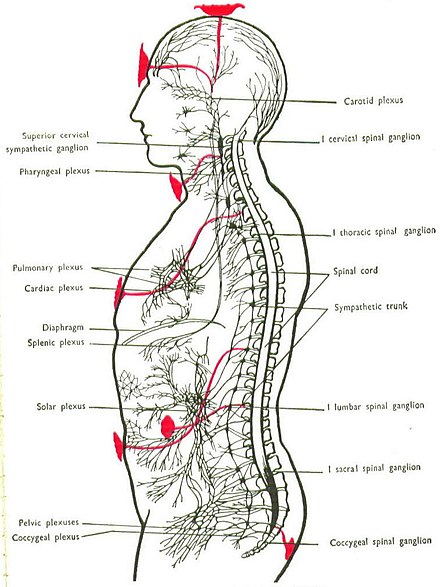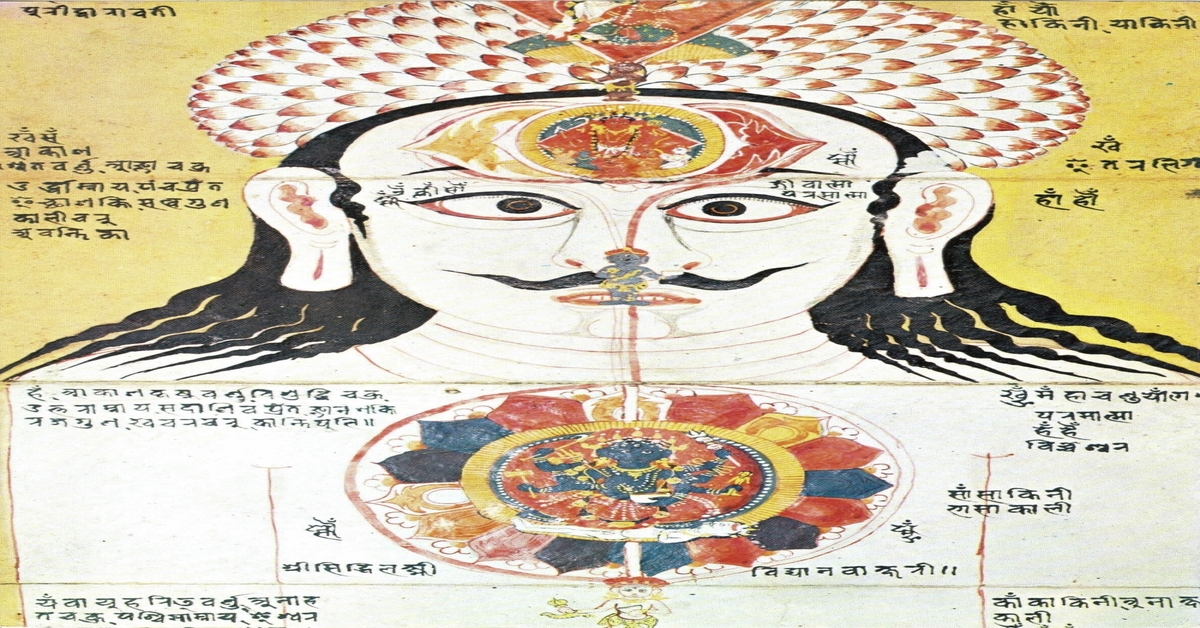Almost every book on Yoga, Pranayama, or Tantra has a diagram that shows the seven chakras located at different positions on the body. But do these chakras actually exist physically or are they just metaphysical concepts? Did the Chakra system always exist in the ancient Yogic system or is it a recent invention? These are some of the questions that will be answered in this article using scriptural sources and research studies.
What are the Chakras?
Chakras are usually depicted as concentration points along the spine in the shape of “subtle” or “invisible” wheels.
“There were five-chakra systems, six-chakra systems, seven, nine, ten, twelve, and even twenty-on chakra systems.”
Christopher Wallis
Traditionally speaking there are many different systems of chakras, and each system has them in varying numbers and different locations. The model we most commonly associate with today is the model of six chakras along the spine and a seventh chakra located at the crown. However, this is a recent invention combining tradition and modern inputs.
Historically speaking some teachings of Yoga have ignored the chakra system completely.
Earliest Reference
Kubjikamata Tantra (11.34–35): It describes the anus as the adhara or “base” where the mula (“root”) chakra is located. It locates Svadhishthana at the penis, Manipuraka (or Manipura) at the navel, Anahata in the heart, Vishuddhi is in the throat, and Ajna between the eyes.

Another list describes them with different names: nadi, maya, yogi, bhedana, dipti, and shanta [1].
A few centuries later the Seven Chakra system became famous which added a seventh chakra called the Sahasrara chakra at the top of the head.
In early systems, chakras were meant as symbols for visualization only. In Tantra System, they are present as symbols that are connected to gods superimposed on a practitioner’s body as a means to transform it.
They are also called adharas (“supports”) for meditation. Sometimes padmas (“lotuses”) because of their petal shape.
Chakras are the hubs or centers from which prana flows. Nadis converge and diverge from these hubs. Focusing on Chakras helps in refining the perception of these vital energy centers.
Another important function of Chakra’s in The Tantric system is to function as a template or placeholder for deities and mantras. Also called in Sanskrit as NYĀSA. For example, each Chakra is often associated with Hindu deities like Ganesh, Brahmā, Vishnu, Rudra, Īśvara, Sadāśiva, and Bhairava. Their location in the chakra order varies according to different systems.
Originally (Sanskrit sources) the Chakras are also associated with earth elements:
| Vishuddha | Space |
| Anahata | Air |
| Manipura | Fire |
| Svadhishthana | Water |
| Muladhara | Earth |
The Many Chakras
Though there are believed to be only Seven Chakras in the modern system, ancient Tantric Yoga texts go as far as mentioning a dozen chakras, while some less than five. “There were five-chakra systems, six-chakra systems, seven, nine, ten, twelve, and even twenty-on chakra systems “[2].
There is often confusion, contradiction, and a staggering number of chakras and nadis mentioned across various scriptures.
A text called Viveka Martanda replaces seven chakras with seven points instead:
“The penis, the anus, the navel, the heart and above that the place of the uvula, the space between the brows and the aperture into space: these are said to be the locations of the yogi’s meditation” (Viveka Martanda 154–55) [1].
Popularity in Modern Times

The popularity of charkas in modern times and their current usage owes it debt to the translation work carried across by various Tantra and Yoga enthusiasts and occultists. A few of these notable mentions are given below:
- Sir John Woodroffe, a British judge in colonial India, who left his job and full time devoted himself to studying tantric texts and translation them. He wrote under the pen name of Arthur Avalon. His famous book is the The Serpent Power (1919) which included a section called “Description of the Six Chakras” (a translation of the sixteenth-century Shat Chakra Nirupana).
- Charles Leadbeater, a member of the Theosophical Society, Co-Freemasonry, author on occult subjects, wrote a book called the The Chakras (1927).
- Carl Gustav Jung, a Swiss psychiatrist and psychoanalyst, studied chakra system and their relation to psychology.
- Anodea Judith’s book titled Wheels of Life (though the many associations she makes with chakra and other things like glands and food have no real basis in the Sanskrit sources).
New Age Misrepresentations
The New Age writings on Chakras have confused and distorted their symbolic meaning. Chakras are now considered real according to them. They are considered a physical fact than a mental creation. They exist instead of being just visualized.
They are illustratively designed, shown with having rainbow colors. This is never found in original Sanskrit sources.
Also, they are linked with things like gemstones, planets, ailments, glands, suits of the Tarot and Christian archangels will power, minerals, foods, metal. For example, maṇipūra chakra is associated with willpower & self-esteem.
These attributions are commonly seen in modern books about Chakras and on the internet. But historically they were never mentioned.
Conclusion
Are the chakras real? The following conclusions can help answer this question:
- The Chakra system we find in the ancient yogic texts in Sanskrit point to the conclusion that the Chakra System was more prescriptive in nature than descriptive. Meaning that Chakras are not existential facts or physically existing somewhere in the body. Nor are they connecting with any gland, organ or hormone. They are more subjective and imaginative in nature. Connected more with visualization techniques to help in meditation and perceiving subtle energy flows.
- The psychological states we connect with chakras like love, power, joy, self-esteem, will-power are completely modern inventions and most of them through western books on this subject.
References
- Book: The Truth of Yoga: A Comprehensive Guide to Yoga’s History, Texts, Philosophy, and Practices by Daniel Simpson (link to the book on Amazon). (author’s blog)
- Book: Tantra Iluminated: The Philosophy, History, and Practice of a Timeless Tradition by Christopher D. Wallis (link to the book on Amazon). (author’s blog)
